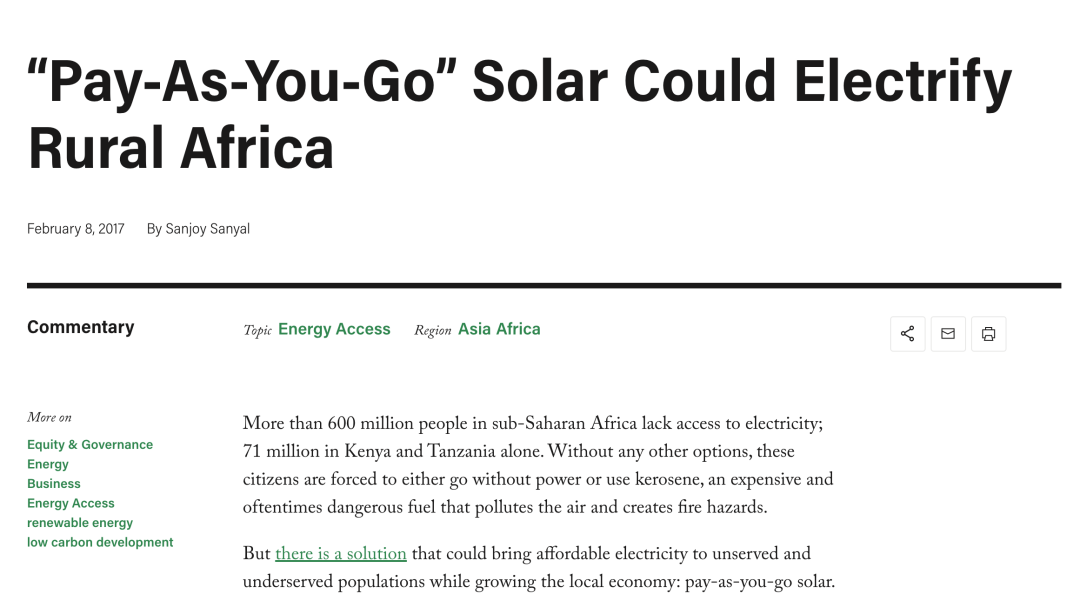Disclaimer:
Please be aware that the content herein is comprised of personal reflections, observations, and insights from our contributors. It is not necessarily exhaustive or authoritative, but rather reflects individual perspectives. While we aim for accuracy, we cannot guarantee the completeness or up-to-date nature of the content.
Images
Type of the Solution
Innovative business model
Affected Sector
Households
Description of the solution
Large upfront costs often deter clean energy use. The Pay-As-You-Go (PAYG) approach to solar energy removes the upfront price barrier by allowing end users to pay in affordable amounts over time. A company essentially rents consumers a solar home system. Basic systems have enough power to charge phones and lights, and larger ones can power small appliances like radios or TVs. PAYG schemes use smart meters installed in households to monitor energy use and enable consumers to pay in smaller increments on a daily, weekly, or monthly basis using mobile banking platforms. Through this model, access to energy in off-grid areas is improved, companies can minimize the cost of collections by automating the receipt of payments and remote rural customers get immediate access to basic electricity without having to take out a loan.
Socio-economic effects
Improved public health, increased access to affordable elecricity
Type of Measure
3. mitigation measures
Type of sub-measure
5. (none)
Who led the solution
Private sector
Timescale of implementation
Short-term (up to 1 year)
Other Notes
Pay-As-You-Go can also be applied to other renewable energy sources such as biomass.
On finance: The Pay-As-You-Go (PAYG) business model renting solar home systems or other solutions allows end users to pay affordable amounts over time.
Links to the solution
 Consent to share form or official link.
Consent to share form or official link.

 3Good health and well-being
3Good health and well-being 7Affordable and clean energy
7Affordable and clean energy 13Climate action
13Climate action
Comments
Log in to add a comment or reply.